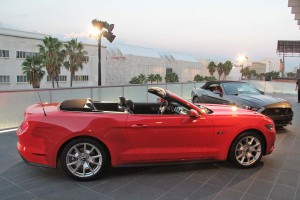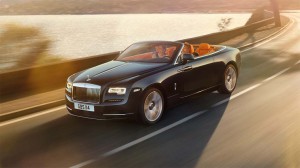
The 2015 Ford Mustang Convertible gives drop-top mavens reason to be excited, but overall, convertible sales are on the decline.
With the introduction of the new Ford Mustang and Chevrolet Camaro in recent months, convertible aficionados have had reason to celebrate, but the new arrivals aren’t likely to spark a resurgence in drop top sales.
Sales of convertibles in the U.S. are off aboutm50% from their peak of more than 344,000 units in 2006, according to IHS Automotive, and aren’t likely to return to that level. Despite blistering auto sales last year, makers moved just over 164,000 ragtops.
“While consumers have returned to the automotive market,” said Tim Urquhart, principal analyst, IHS Automotive, “the gain has been in more practical segments, and purchases of convertibles and roadsters have lagged the general automotive resurgence.”
The company is predicting a small gain in sales this year, rising t o 208,000 units.

The fifth-generation Mazda Miata generated a lot of buzz among aficionados, but it's still a niche vehicle in terms of sales.
The U.S. has always been the largest ragtop market in the world, Urquhart notes, but the trend of few open-air rides is a global one. The global high-water mark of 831,000 units was achieved in 2004, and despite plenty of new offerings for those wanting to feel the wind in their hair, there appears to be fewer buyers wanting to act on those feelings.
Another key market for sales is Europe, but even there the love of the roadster has waned by 58% during the last decade, including in traditional strongholds of Germany and the United Kingdom that make up 74% of the market. Convertibles now make up just 1% of vehicle sales on the continent.
“There are signs that the market will recover slightly,” Urquhart noted, adding it will be led by the introduction of new convertible variants such as the BMW 2-Series, Mazda MX5 Miata, Land Rover Evoque and Mercedes-Benz C-Class.
While some look to China as perhaps the next great hope to boost convertible sales, they’ll need to look elsewhere. The Chinese do not share the same level of enthusiasm for convertible models as other parts of the world. This is due, in part, because they have no long-term cultural significance to buyers there as they do in the U.S.
(A new dawn for Rolls-Royce with new convertible. For more, Click Here.)

The new Rolls-Royce Dawn convertible debuted earlier this week: marking the shift in convertibles from high-volume brands to luxury marques.
Additionally, driving around some parts of China with no roof would be highly unpleasant due to smog and pollution levels.
The final nail in the coffin is, ironically, the fact there are a plethora of drop top options. A quick review of the new introductions reveals a theme: luxury marques. Most of the new convertibles come from high-end automakers, often out of the reach of most vehicle buyers, with the most recent example being the Rolls-Royce Dawn, which debuted earlier this week.
During the high-water mark of 2004, high-volume brands sold most of the convertibles: 51.5% of the segment. Luxury nameplates were just 40.2%. Now the numbers have more than flipped. Luxury brands dominate accounting for 55.5% of sales — in a much small segment — compared with the 33.1% of mass-market brands.
(Click Here for details about TDB’s first drive in the 2016 Mazda Miata.)
“As we move forward,” he said. “we expect to see the premium brands continue to grow within the convertible market while mass-market OEMs that were not as successful with convertibles in previous years instead concentrate their resources toward more popular and, in some case, more practical SUVs and crossovers.”
Why aren’t high-volume makers lining up to make convertibles in large numbers? The market is hot and it would seem that if interest in the ragtop versions of the aforementioned Mustang and Camaro are generating interest, there might be a market for more models.
Automakers must now weigh the benefits of selling more of the heavier, more-expensive-to-engineer convertible, notes Kelley Blue Book’s Jack Nerad. In the past, convertibles were little more than coupes with steel roof cut off and the cloth top slapped on top.
(To get a look at the hottest car launches of 2016, Click Here.)
However, with tougher safety regulations in place, the vehicles have to be engineered with stiffer frames in order to pass crash tests. With stiffness comes weight, Nerad told NPR recently. That weight lowers fuel economy and with the 54.5 mpg federal mandate looming large on the horizon, automakers aren’t rushing out to introduce more convertibles at the low end of the price spectrum.

Simple fix just sell the retractable Hard top versions you can drive all winter and summer .